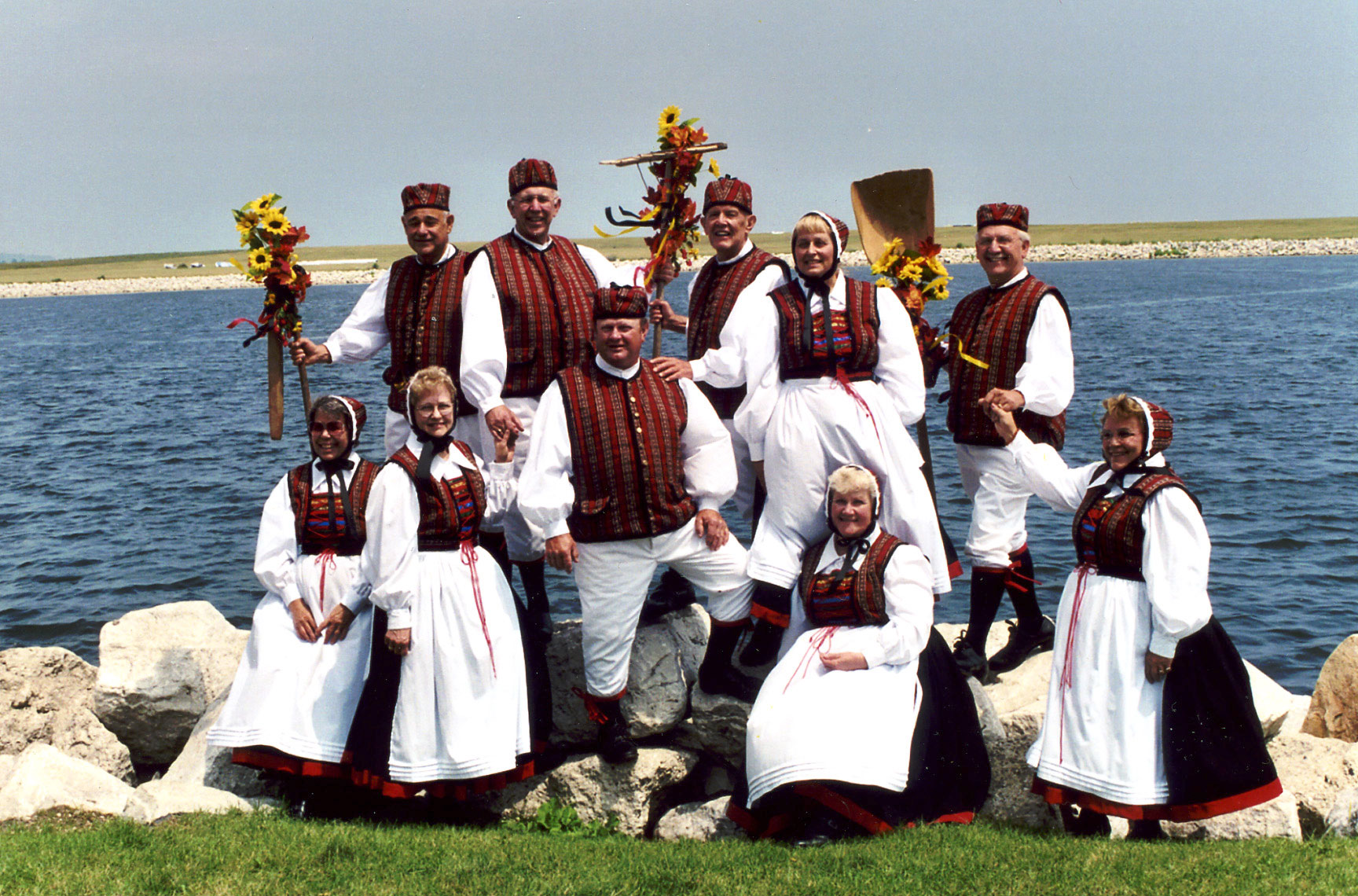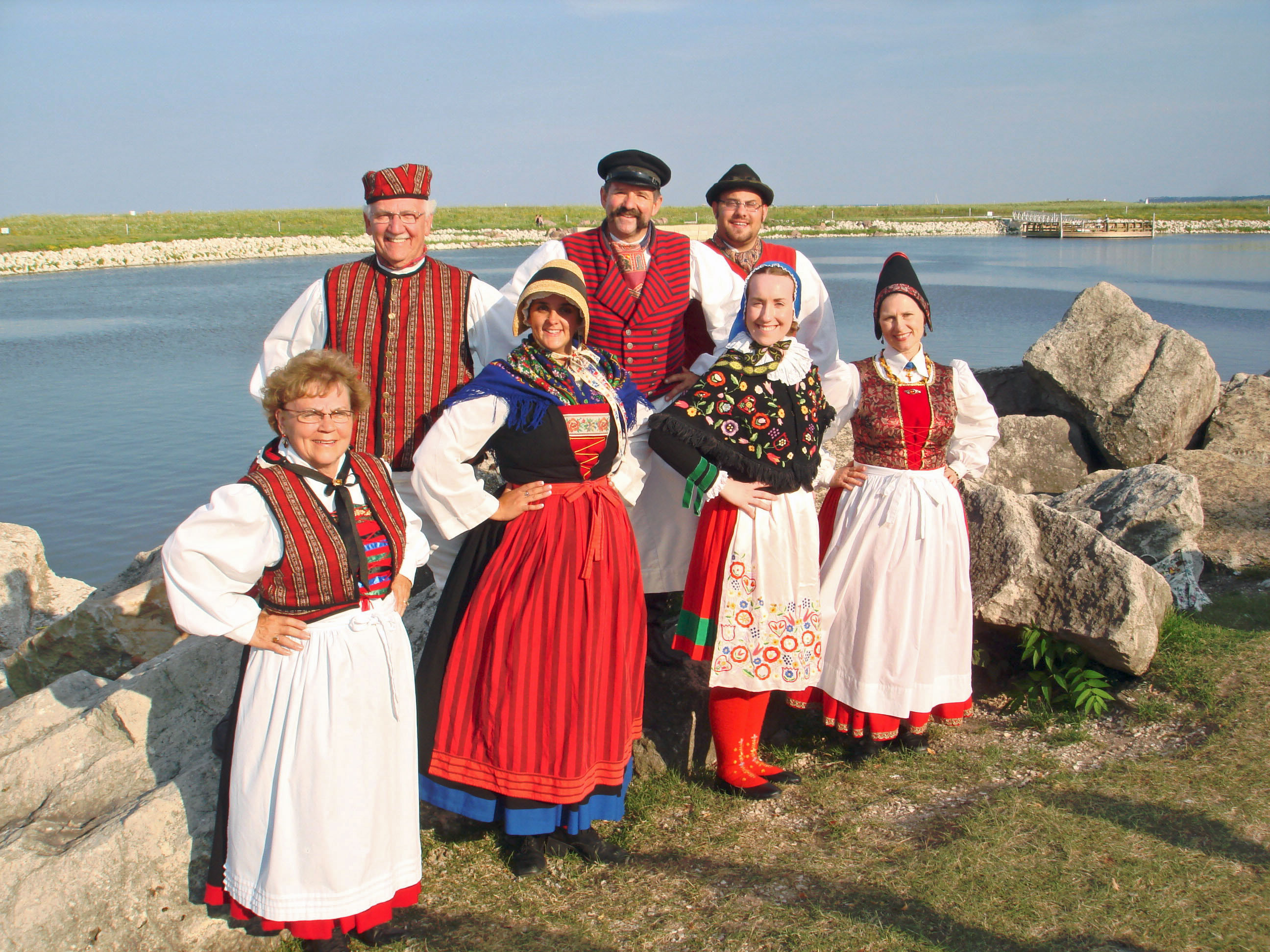The images and narrative below describe the Jamunder Tracht adopted in 1995 by the Pommerscher Verein of Central Wisconin. Members of our Verein however, come from various areas in greater Pomerania including West and East Prussia, Mecklenburg, and Posen provinces. There are naturally a variety of Trachten (Local Folk Dress) throughout the region. We, primarily for the sake of economics and simplicity selected the Jamunder version to be our official tracht.
 |
| Our new Jamunder Tracht as displayed at the Milwaukee, WI Germanfest on the shore of Lake Michigan. |
 |
| Members of the Pommerscher Verein Fristadt join to illustrate added variations of the Jamunder Tracht |
In 1995 the Jamunder Tracht was chosen for our club by the Board of Directors. The character of the tracht is the striped fabric of the man's vest and hat and the women's bodice and cap. The main color of this fabric is red with fine stripes of black, green, yellow, blue and white.
The search across the United States for a fine wool fabric to meet our needs lasted for years. A break came, when on our 1998 Roots Tour we met Irene Hackbarth of Solingen, Germany. She is an authority on the subject as she co-authored the book entitled "Pommersche Volkstrachten" which describes the tracht of several different regions in Pomerania. She gave us the name of a small German weaving mill that is able to make specialized fabric. Probsteiner Handweberei Ruckert-Dulski from Schoenberg, Germany, produced 10 meters for us at a cost of DM 1,243 or approximately $65.00 per yard.
The women's Jamunder Tracht is completed with a fine wool skirt in black with a red band at the bottom and a white apron. The man's Jamunder Tracht has white knicker length pants with a red band at the bottom. Both have white shirts with full cut sleeves and black boots and stockings.
The book "Pommersche Volkstrachten" also gave us more information about the village of Jamund, where this tracht origiated and was first documented in 1279. It most likely was developed around a cloister or nunnery. The culture of the cloister had a lot to do with the tracht. In 1331 Jamund was given (deeded) to the neighboring town of Koslin by Bishop Friedrich von Eickstedt Stadteigentumsdorf. The peasants who worked the land became more free and were able to own land. They were proud families who made a good income in wheat.
The village of Jamund is on higher ground on a hill located between Koslin and the Baltic Sea. It was a typical village of the middle ages, developed in a circular fashion with the fields extending out from the buildings. Completely surrounding this hill is a moor (peat moss like swamp) which made outside travel impossible unless it was a very dry season or the ground was frozen in winter. In 1899 the first road through the moor was completed from Jamund to Koslin, a distance of about 4 miles.
Riches and isolation of the village led to their own culture. It blossomed until the end of the 19th century and died quickly after that. A big part of the culture, and village, was lost because of multiple fires.
A 1931 movie "A Fight For The Homeland", advertising Jamund and Grossmodlen, showed the tracht and costumes of the villages. It documented the rich and fantastic Jamund culture.
There was a sizable exhibition of the Jamund culture in museums in Berlin and Stettin which were lost in World War II. Today the Koslin Museum has a few items. What is left shows a wealthy background of artistically skilled carvings on furniture and beautiful embroidery.
Watch for our tracht modeled at upcoming events.
--Carol Kleinschmidt